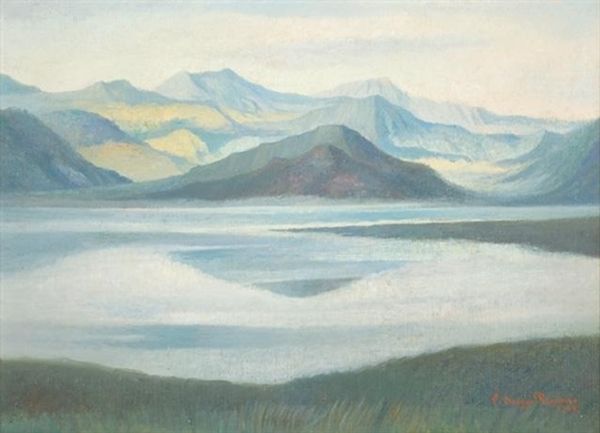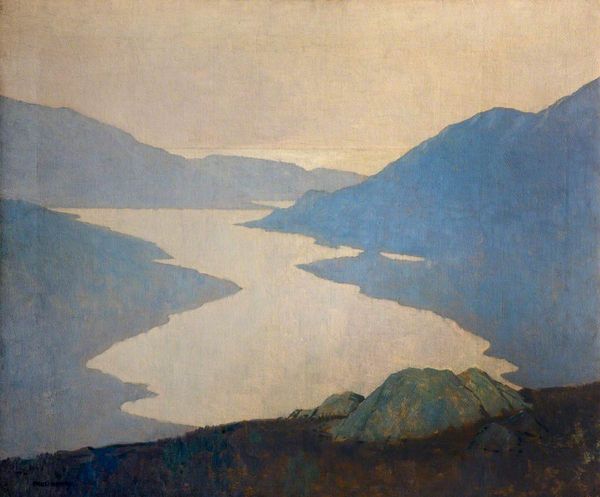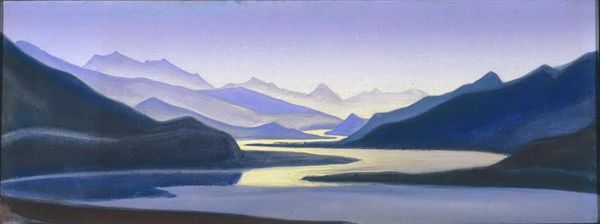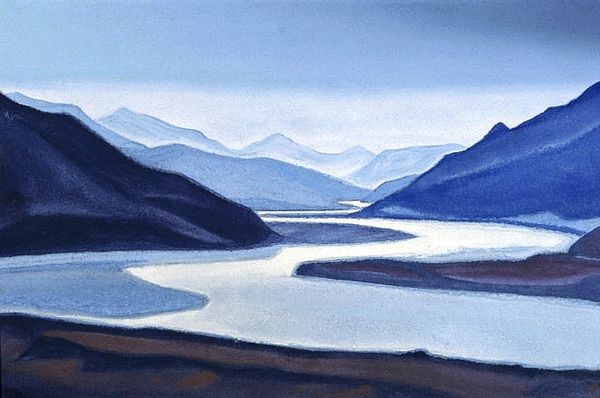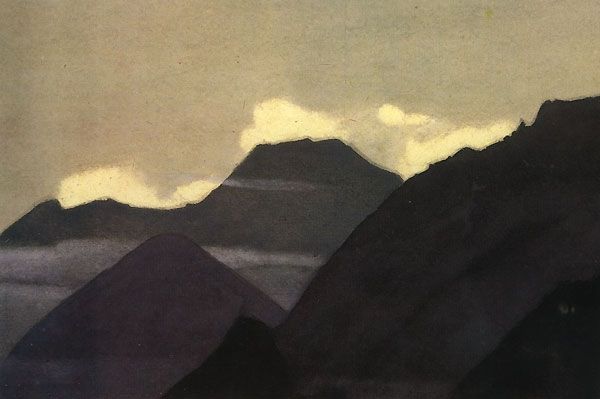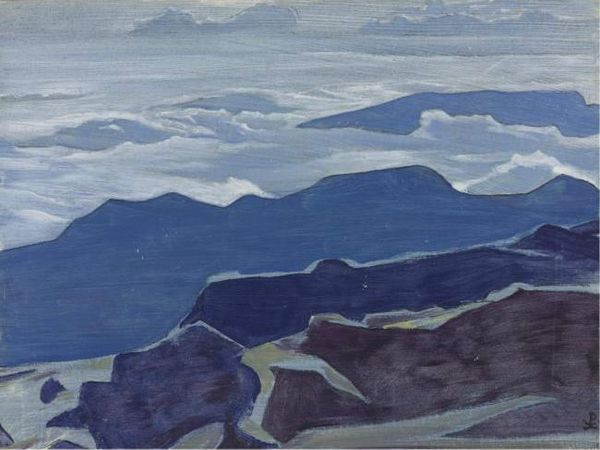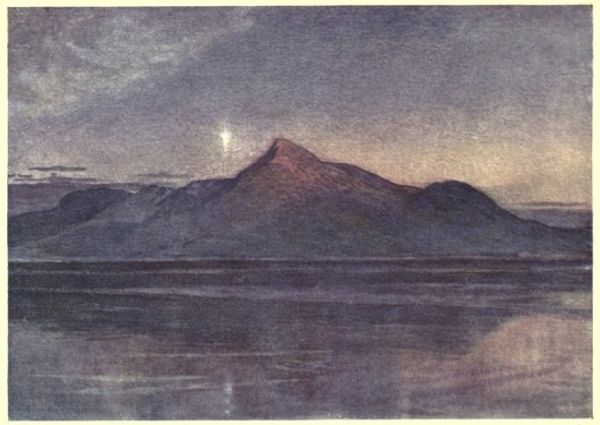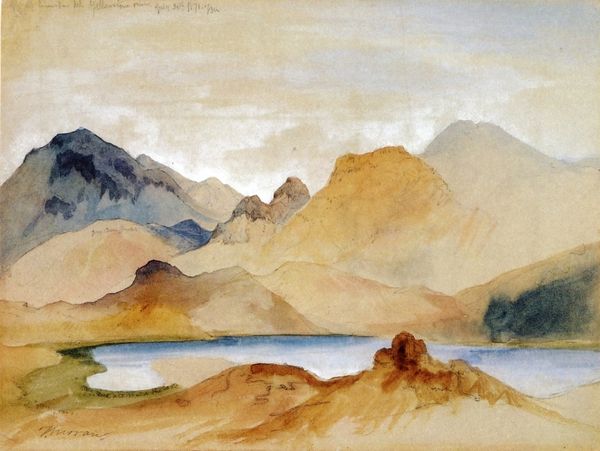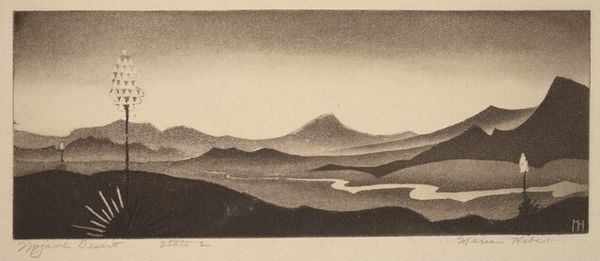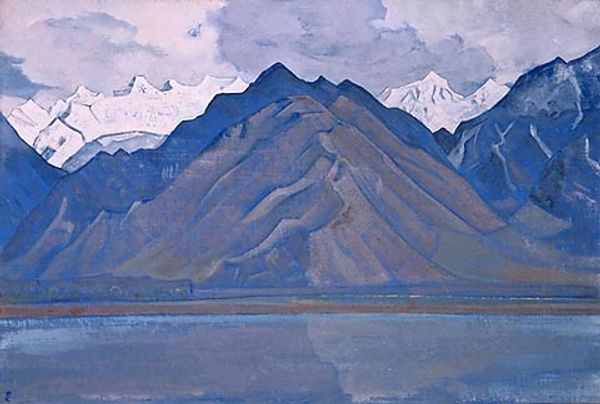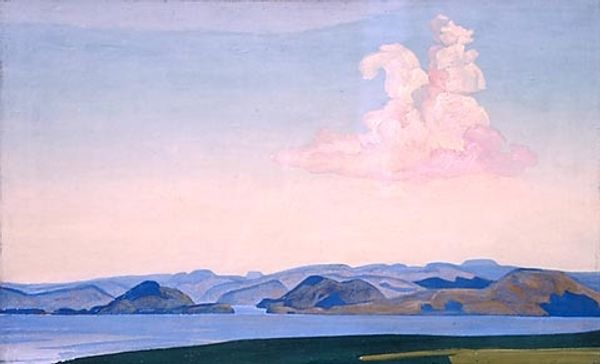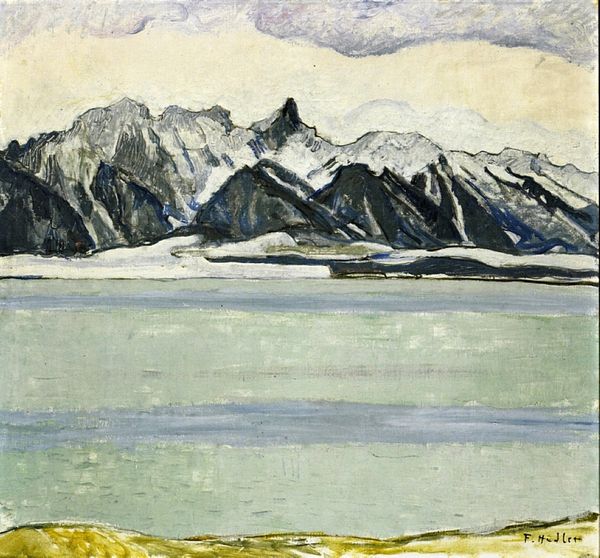
Dimensions: 30.5 x 45.7 cm
Copyright: Public domain
Curator: Immediately, I am struck by its serenity. There’s almost a hushed reverence in the way the light filters through the mountain passes. It reminds me of entering a sacred space. Editor: Indeed. This is Nicholas Roerich's "Brahmaputra," an oil on canvas completed in 1946. Roerich, deeply involved in Eastern philosophies and spirituality, portrays a Himalayan landscape that evokes a specific cultural geography. How does the symbolic nature of landscape factor into this emotion of serenity that you mention? Curator: Well, consider the river itself, the Brahmaputra. As a symbol, rivers are often associated with the flow of life, with time, with journeys. The way it winds through the painting, reflecting the light, it’s as if it's carrying ancient wisdom through the ages. It offers a conduit to contemplate cultural endurance. Editor: I see it too. There’s a deliberate flattening of the perspective, a kind of reduction to essential forms which recalls Eastern artistic conventions. The mountains become symbolic rather than purely representational. The indigo shadows certainly feel emblematic of a cultural mood of that period as the movement toward self determination began. Curator: The palette reinforces this. Roerich's use of blues and whites – colors associated with purity, transcendence, and spirituality – elevate the natural scene. Editor: Absolutely, and given Roerich's theosophical leanings, it’s hard not to see this as an intentional expression of harmony. Though some could find that romanticizing potentially papers over the real political and ecological issues impacting that river region in the mid-20th century. Curator: A valid critique. Yet, there's an enduring quality to Roerich's ability to capture that sense of spiritual depth embedded in the natural world that continues to draw viewers. The landscape becomes a vessel for contemplating the bigger picture, regardless of the complexities inherent within that region. Editor: And arguably the power of his symbolism is its ability to communicate across cultural divides even today, though that may invite the kind of cultural re-evaluation that remains a constant dialogue within the study of art. Curator: A dialogue which continually allows us to appreciate layers within landscape paintings that might initially just appear beautiful.
Comments
No comments
Be the first to comment and join the conversation on the ultimate creative platform.
